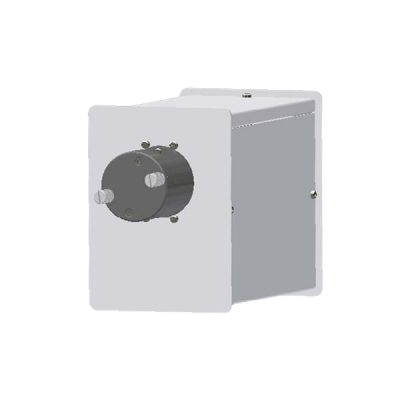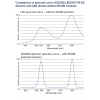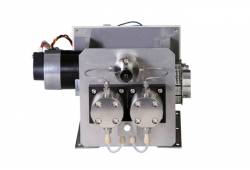LED20G Detectors Standalone
Standalone LED20G Detectors with LEDs as a light source are used for preparative and flash chromatography. They have excellent linearity up to 4 AU and a narrow spectral half-width.
Related variants
| Image | PN | Name | Number of channels (signals) | Basic wavelengths [nm] | Spectral half width [nm] | Request quote |
|---|---|---|---|---|---|---|
|
Image

|
PN
LEGB2100
|
Name
LED20G Single UV-VIS Detector Standalone
|
Number of channels (signals)
1 fix wavelength
|
Basic wavelengths [nm]
254 or 280 (others on request)
|
Spectral half width [nm]
4
|
Actions
|
|
Image

|
PN
LEGB2200
|
Name
LED20G Dual UV-VIS Detector Standalone
|
Number of channels (signals)
2 fix wavelengths
|
Basic wavelengths [nm]
254 and 280 (others on request)
|
Spectral half width [nm]
4
|
Actions
|
- Description
- Parameters
The LED20G detectors, with UV-VIS Light-Emitting Diodes (LEDs) as the light source, are standalone UV-VIS detectors for preparative and flash liquid chromatography, featuring an internal cell. The LED20G detectors use unique ECOM patented technology that significantly improves the performance of these LED detectors.
Why the ECOM LED20G series detectors have the best parameters on the market among LED detectors
To explain the difference, the LEDs themselves typically have a peak wavelength tolerance of ± 5 nm and a spectral half-width of 10–20 nm. This is unacceptable for some applications, as e.g. FPLC, and it also causes nonlinearity. However, ECOM‘s solution allows narrowing the spectral bandwidth and selecting the exact wavelength from the LED-diode spectrum.
Key features and benefits of LED20G detectors:
• Sharp, high, and symmetrical spectral peaks thanks to ECOM-patented technology
• Excellent linearity
• Excellent price-performance ratio
• Compact device dimensions
• Low cell heating due to the LED´s low power supply (0.7 W), which allows use for peptide analysis or FPLC
• Higher sampling speed
• Sophisticated diagnostic software
• Diodes with wavelengths of 254 and 280 nm, other wavelengths available on request
| Number of channels (Signals) | 1 or 2 |
|---|---|
| Linearity | R² ≥ 0.999 up to 3.5 AU |
| Typical spectral half-width | 4 nm |
| Noise level at test cell (254 nm, TC 0.75 s) | ±10 × 10-6 AU |
| Drift at test cell (254 nm after 1 h) | 1 × 10-3 AU/hr |
| Digital output | RS232, USB, LAN |
| Display, keypad | No |
| Power supply | 12 – 24 V DC |
| Power input | 4 W |
| Wavelengths | 254 and/or 280 nm |
| Optical cables | no |
| Dimensions W x H x D | 160 × 55 × 73 mm (6.29 × 2.16 × 2.87 in) |
| Weight | 0.65 kg (1.43 Ib) |










